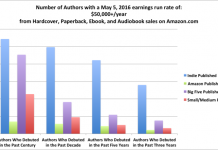
The Economist has a good article on how Springer is going about digitizing its backlist:
SPRINGER GROUP traces its roots to a Berlin bookshop, opened by Julius Springer in 1842. He began publishing journals in 1843, the same year this newspaper was founded. Despite a slew of mergers, acquisitions and spin-offs—including accreting another hoary firm, Kluwer Academic Publishers, founded in 19th-century Netherlands—the publisher of academic and business tomes has an acute sense of its own history. Like many of its peers, it now publishes print and electronic versions of books simultaneously. Its contemporary digital library contains some 50,000 titles, mostly published after 2005 when the digitisation drive began in earnest. Now, though, Springer has decided to make the 65,000 tucked away in its vast archive available electronically under a commercial licence.
Many are pedestrian volumes or outdated research, of interest to science historians, if that. But there are also some gems. Your correspondent was sent a few samples—works by Albert Einstein, Sir John Eccles and Rudolf Diesel. Crisp digital reproductions of other seminal writings, long since out of print, by Niels Bohr, Lise Meitner, Werner Siemens and a host of scientific and technological luminaries can now be had, with the full text embedded for excerpting or searching. This effort, still underway, parallels other work to open up historical scientific records. The Royal Society says its trove of roughly 24,000 papers more than 70 years old—dating back as far as 1665—may be freely accessed. (Another 36,000 remain under licence.)

































